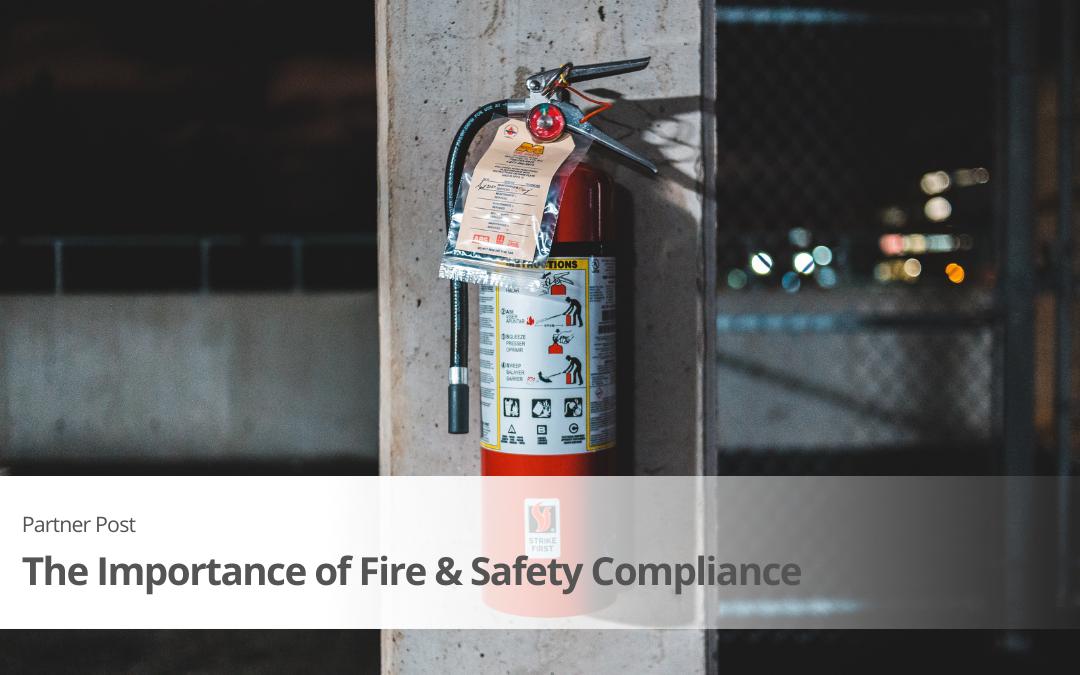We have partnered with Solutions in Engineering to provide some insight and help owners understand the importance of being compliant with current fire and safety regulations.
Since the pandemic arrived on our shores, more and more workers have been forced to conduct business from their home, as directed by the federal government to help us slow the spread of COVID-19. In light of this increased presence in residential and mixed-use strata schemes, the likelihood of an injury occurring in these spaces is also increased dramatically.
Now more than ever is the time to ensure your common property has been assessed of and made free from hazards. There are compelling risks driving the building’s need for safety obligations. They are the duty of care and the applicable compliance codes, legislation and Australian Standards that apply to buildings.
While compliance means you are taking steps to ensure your property is safe and protecting yourself from the liability of accidents and injury occurring, the reality is that your biggest risk in not a compliance risk- it is trumped by your duty of care risk.
Under the following pieces of legislation and codes:
- Work Health and Safety Act 2011
- Building Act 1975
- Fire and Emergency Services Act 1990
- AS 1851
- The National Construction Code (Building Code) 2019
- MP 6.1 – Commissioning and Maintenance of Fire Safety Installations.
Bodies Corporate and owners, must consider their duties under the law, especially regarding the health and safety of any person entering and egressing the common property.
WHS Act 2011:
Section 17 (1) outlines the duty to ensure health and safety, requiring the Body Corporate to eliminate or minimise risks so far as is reasonably practicable.
Section 18 Reasonably practicable is outlined as regard must be had to the following matters:
- Likelihood
- Degree of harm
- What is known about the hazard/risk and ways of eliminating or minimising it
- Availability and suitability of ways to eliminate or minimise the risk
- The cost of eliminating the hazard or risk
Put simply, Bodies Corporate have a non-delegable duty to do all that is ‘reasonably practicable’ to ensure the health and safety of all occupants of their properties. This is a common law duty of care that is reinforced and echoed by multiple pieces of legislation.
Meeting these requirements warrants an active stance by a Body Corporate to be engaging and monitoring safety issues on the property. Engaging a professional company such as Solutions IE to take active part in this process is a significant step towards mitigating the Body Corporate’s liability and prevent injury.
Should an owner take it upon themselves to undertake Fire services or a safety hazard assessment check? Even if the individual was experienced and relevant skill set to undertake these assessments, we do not recommend it. This is because it leaves the committee and the resident open to litigation. By using a suitably qualified and properly insured contractor to undertake this type of inspection work, the responsibility is at least partially shared by them if something untoward were to happen.
We recommend that a motion for a Safety Report be completed every 12 months. The committee should then agree for the rectifications to be done and your wonderful Body Corporate Manager would then enlist the trades services required. After the Safety report to-do-list has been completed, if an accident were to occur on the common property, the committee could show a court of law that they have done as far as is reasonably practical to minimise risk.
Accidents will happen, if we all do our best to minimise the risk of harm, this will also assist the BC in getting insured for a reasonable amount. Same goes with poorly maintained properties. Well maintained building will have a positive impact on your premium. Insurers are now pricing strata to reflect the risk of the area. Maintain the building, proactive maintenance helps prevent claims.
In summary, there is no piece of legislation that I can point to that states an BC must do this or else. The best advise I can give is from when I was doing a presentation at a Strata Community Association conference on Fire and Safety compliance. A Work Health Safety Specialist Lawyer said, “The Body Corporate that fails to comply with WHS and Fire Safety Measurers, does so at their own peril” and by this he meant, when something does go wrong, the judge will ask “what did you do to meet or exceed the Australian Standard applicable?
Our standards have been put in place as the minimum requirement to assist us in reducing harm to ourselves, owner’s, tenants, visitors and even trespassers who come onto the premises are not injured (if you would like to understand the legal requirement for this, please refer to Hackshaw v Shaw [1984] 155 CLR 614). If we all try and be proactive in managing our obligations this should help result in living in a safe and harmonious community.
For more information, head to the SIE website.
